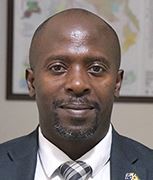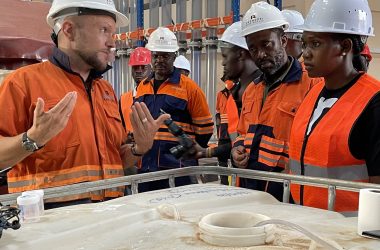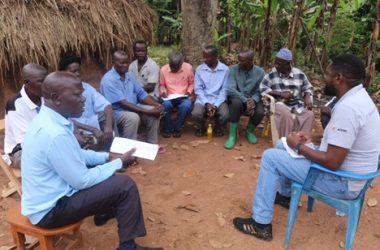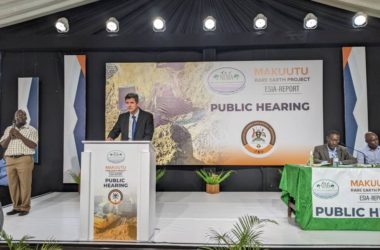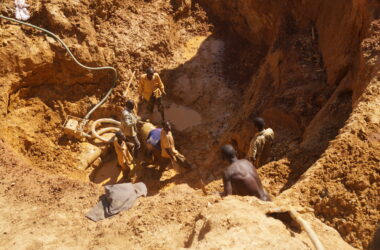Despite being central to Uganda’s mining industry, Artisanal and Small Scale Mining (ASM) in Uganda has for years been neglected by authorities.
Until recently, the ASM sub-sector was not even duly recognized by the law. Yet this sector employs 200,000 people and another 2 million depend on it.
But owing to pressure from the artisans themselves and rights activists and a realization by the authorities that ASM is a major component of the mining sector, attitudes are beginning to change. As a result, prospects for the ASM subsector have never been better.
Broadly, ASM is a subsistence form of mining where men and women use basic tools like pick axes, hammers, shovels etc., to extract a wide range of minerals.
Their activities are predominantly informally organized, disorganized, un-mechanized and often characterized by hazardous working conditions, lack of planning, child labour, poor health conditions and gender disparities.
Usually, ASM comprises all mining operations and associated activities that are smaller in scale than medium scale mining. ASMs have always been at the centre of the mining sector and were the first to discover minerals in Uganda during the colonial days.
At the time, their activities involved the production of iron and salt in South Western Uganda followed by gold and base metal mining in several places in Uganda.
Between the 1920s and the 1950s, with the discovery and establishment of a number of gold and tin mines across South Western Uganda small-scale mining was introduced to the indigenous Banyankole, Batoro, Bakiga, and other Bantu speaking tribes of that region.
In 1929, colonialists settled in Busia District (Tiira) after the discovery of the Busia gold field and started mining gold with the assistance of the local people who also realized that there was gold in the area.
This in general led to small migrations into mining areas by various local tribes as well as Rwandese and Congolese, whose descendants still populate many of the mining areas in Uganda today.
With the relative stability experienced from the mid 1980s, a series of gold and base metal discoveries by artisanal miners generated rushes that drew between 1,000 and 5,000 people and introduced ASM to a number of farming and pastoral communities.
Most of these ASM activities have been alluvial, but those few occurring in hard rock deposits have led to the establishment of small to medium scale mechanized operations where mining, crushing, grinding, and gravity concentration equipment replaced the manual hauling, crushing, grinding, and panning methods that characterize ASM across the country.
At Busitema for example, cyanide vat leaching was introduced as an alternative to mercury amalgamation, which is still practiced by ASM in that region.
Although licensing of several other smallscale, hard rock operations (vis-à-vis “Location licenses” for small operations) also resulted from a series of discoveries in the 1980s through to today, these operations continue to be highly manual, employing essentially the same practices as unlicensed and/or illegal miners.
Other commodities like sand, clay, dimension stones and construction materials (aggregates) have been mined locally by communities and homesteads throughout the whole country to support the domestic construction industry. The production rate is controlled by demand and it is also seasonal and varies from region to region.
The women and men miners generally use basic tools such as pick axes, hammers, shovels, hoes etc. to extract a wide range of minerals though out the whole country.
Most often women and men enter the ASM sub-sector as it may be the most financially lucrative, most viable or sometimes the only livelihood option.
Most artisanal miners produce industrial mineral, however, there are few others involved in the production of precious metals and stones in the areas of Namayingo, Busia, Karamoja, Mubende and Isingiro, Ntungamo.
One of the objectives of the Mineral Policy 2001 of Uganda was to; regularise and improve artisanal and small-scale mining. The policy aims at achieving this by among others, applying light-handed regulation in small-scale mining; providing extension services to the small-scale miners through their associations; and carrying out awareness campaigns targeting the artisanal and small- scale miners.
The Government was also urged in the policy, to encourage artisanal and small scales miners to form associations and other organisations in order to improve capacity to produce and market their mineral commodities.
Small scale mining is provided for in the Mining Act 2003 by way of location license, which are granted for a two-year period and is renewable for 2 years.
There is a new wave of reforms including the 2018 Mining Policy and the 2019 Mining Bill, all aimed at developing the sector. Government has even embarked on the biometric registration of ASMs. As part of efforts to recognize ASMs, government has already handed several location licences to associations it encouraged to formalise operations.
The new law will usher in a new licensing framework for ASM activities. This and the ongoing biometric registration of ASMs present new opportunities to mining communities, local governments and the central government in terms of sustaining livelihoods and increasing the contribution of mining to the country’s GDP.
With all this, mining promises to uplift many Ugandans out of poverty and contribute to the country’s attainment of sustainable development goals.
We at the African Centre for Energy and Mineral Policy (ACEMP), are super excited about all these efforts and believe that the first ever Uganda Artisanal and Small Scale Mining (UGASM-Q) Conference and Exhibition we have organised together with our partners, will go a mile further in establishing a platform for unleashing the full potential of ASM.
Bwesigye Don Binyina
Mineral and energy economist
Executive Director,
Africa Centre for Energy and Mineral Policy (ACEMP)
+256772512460

